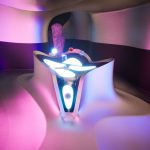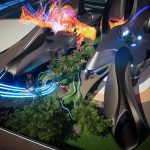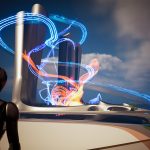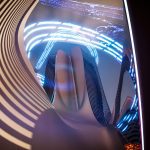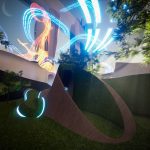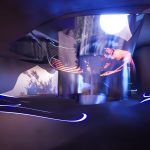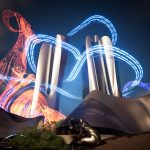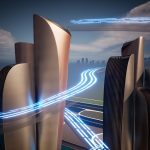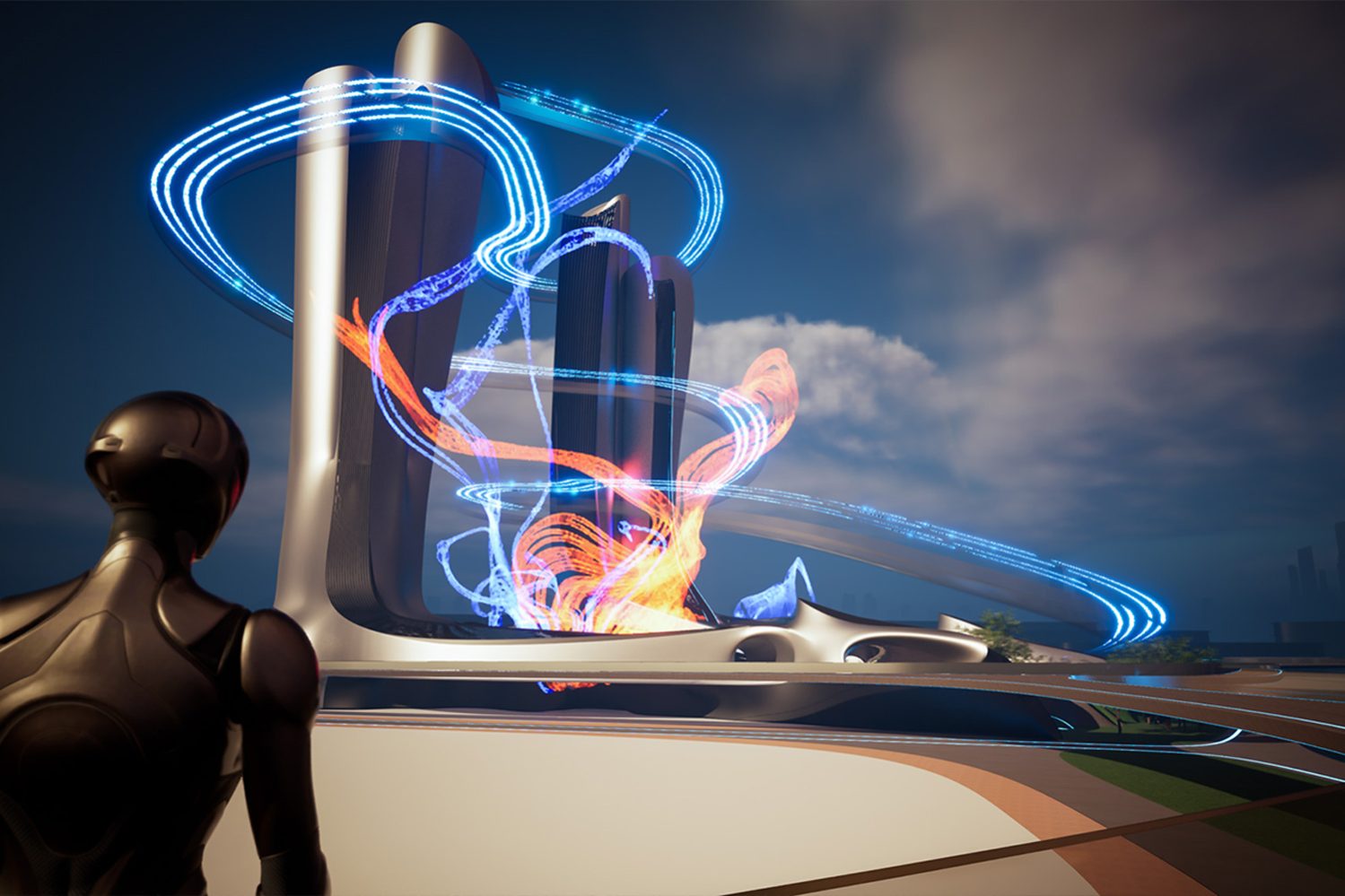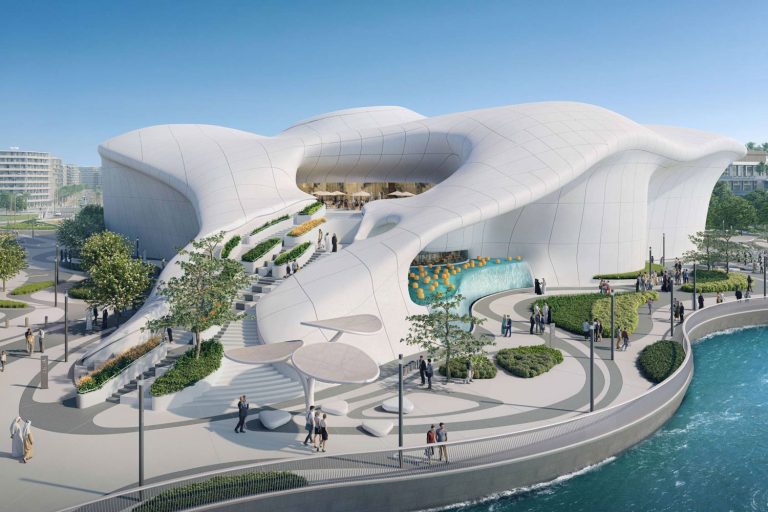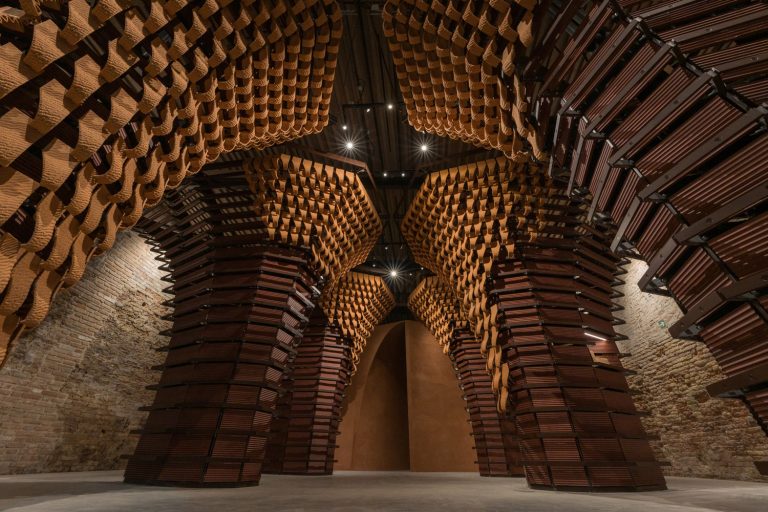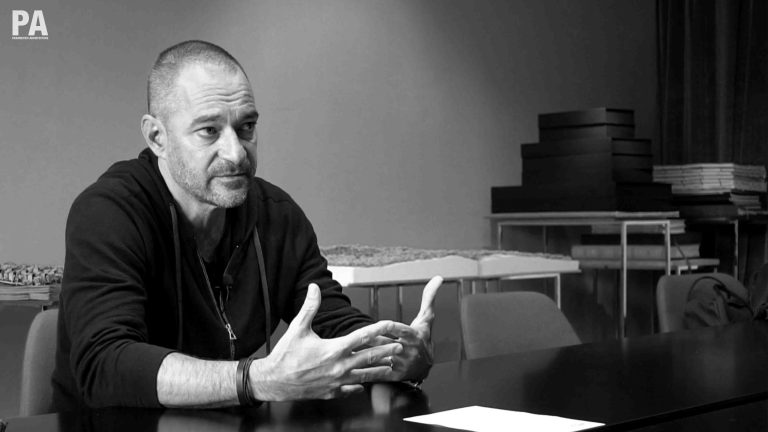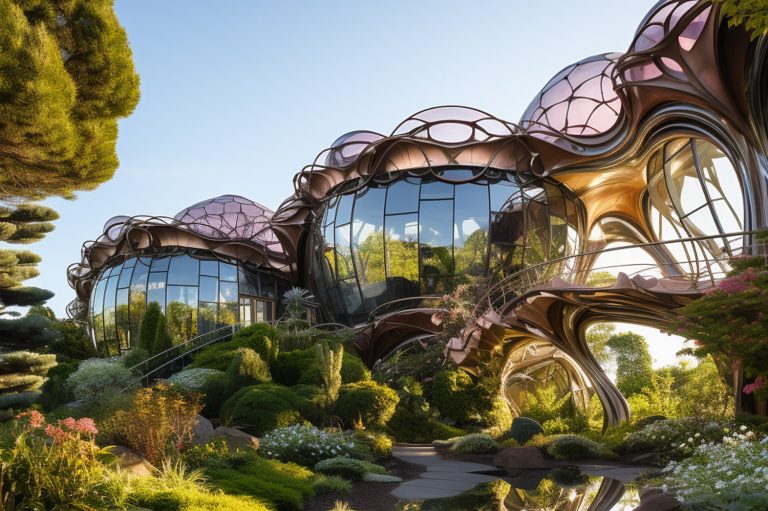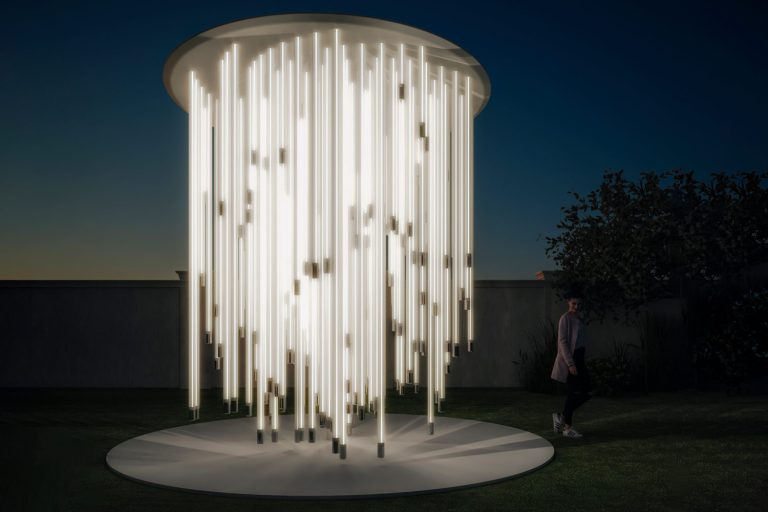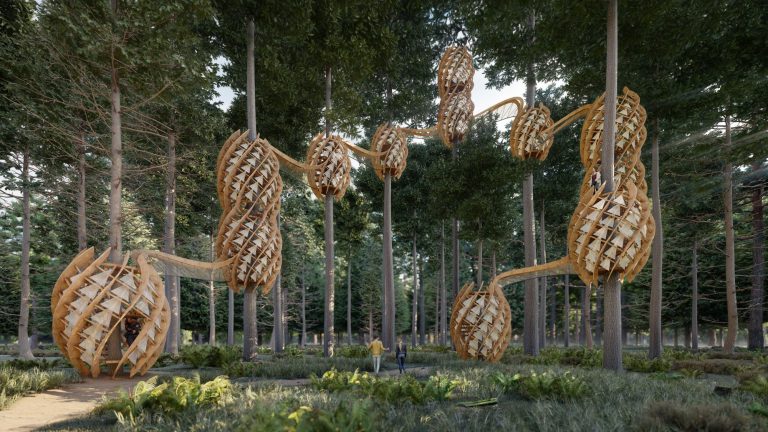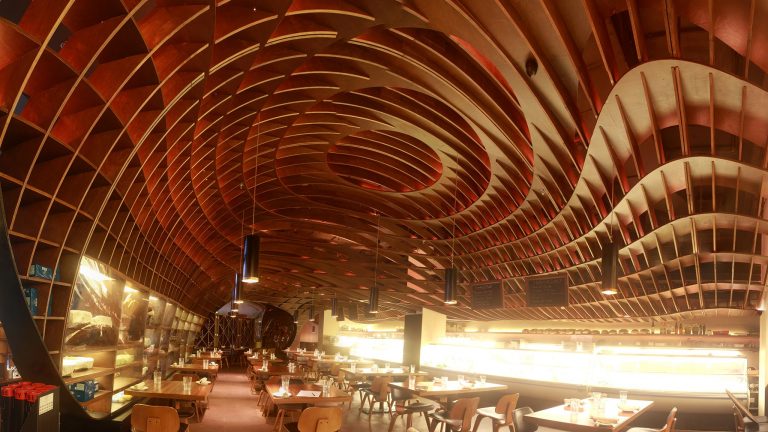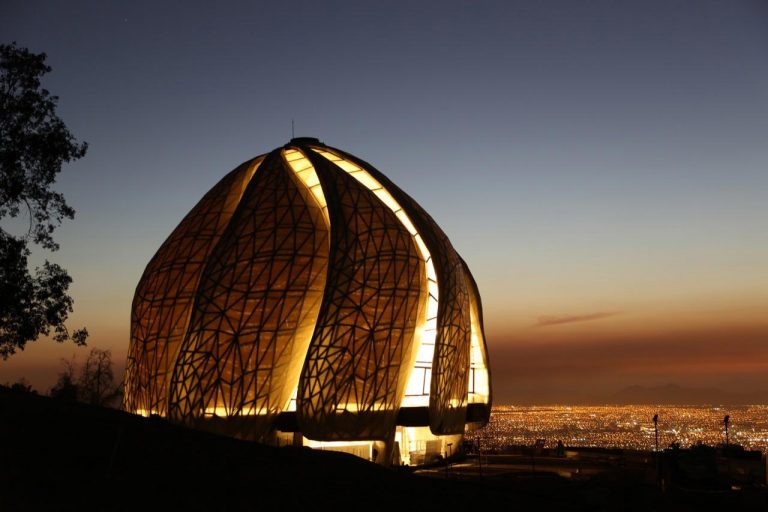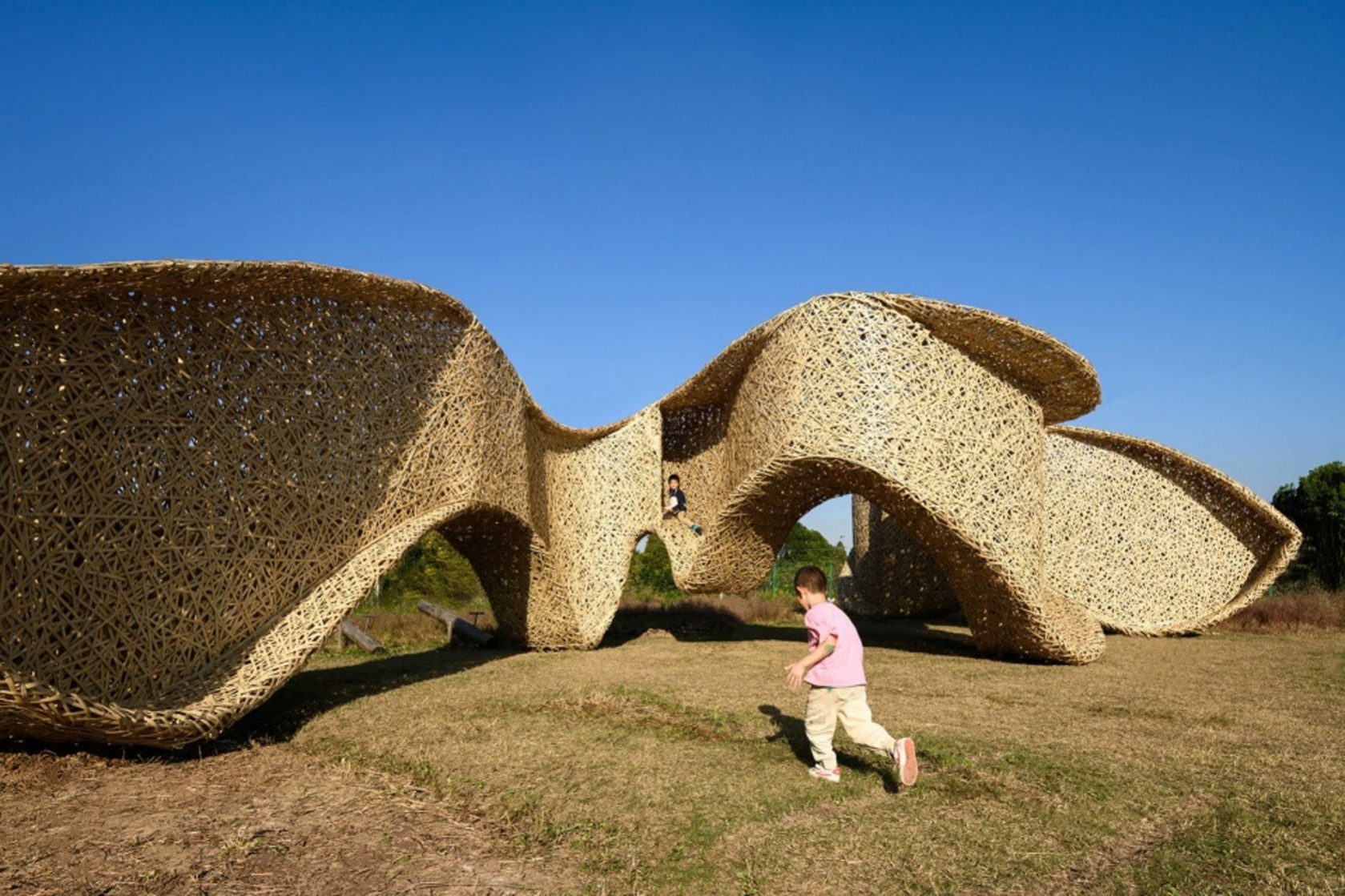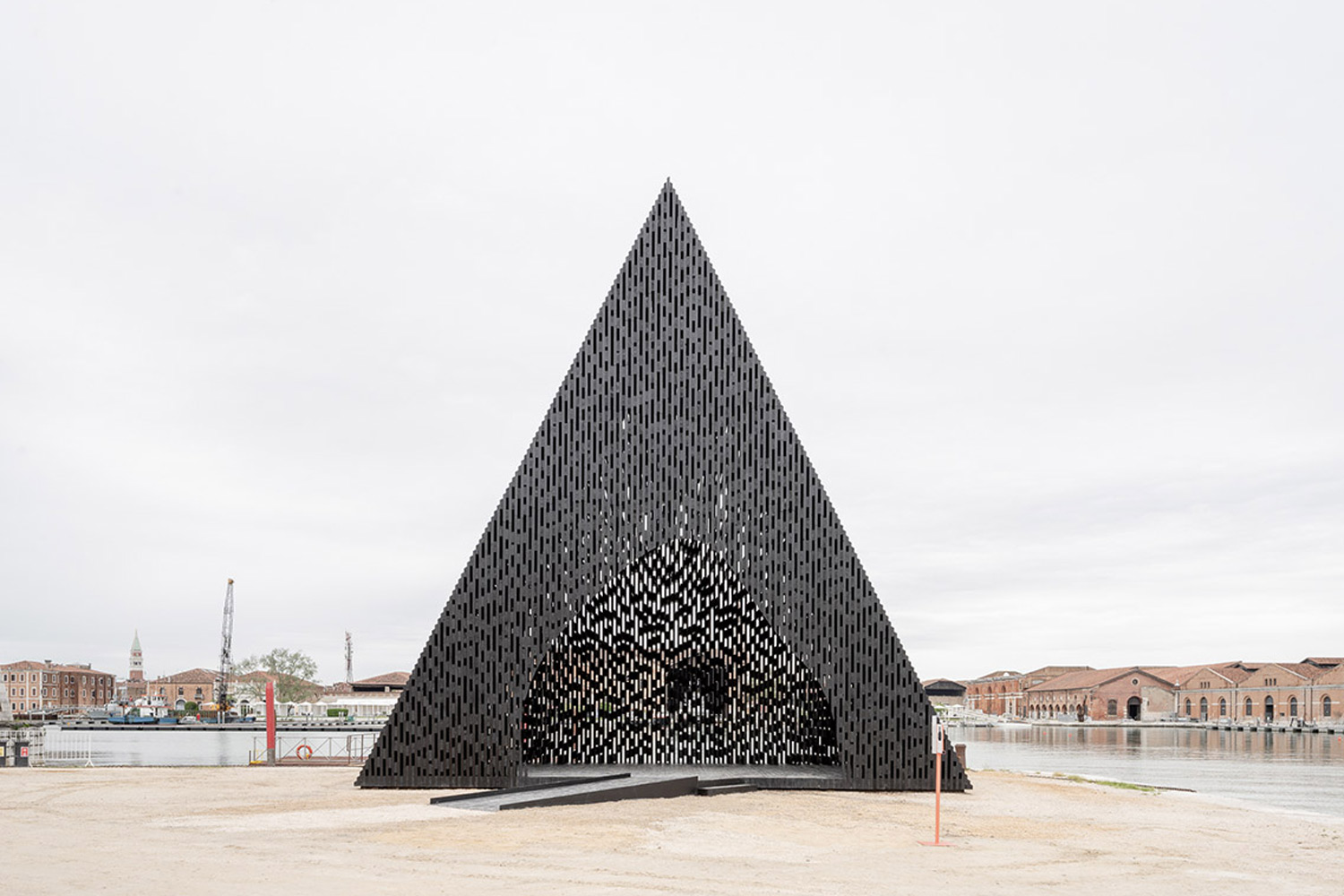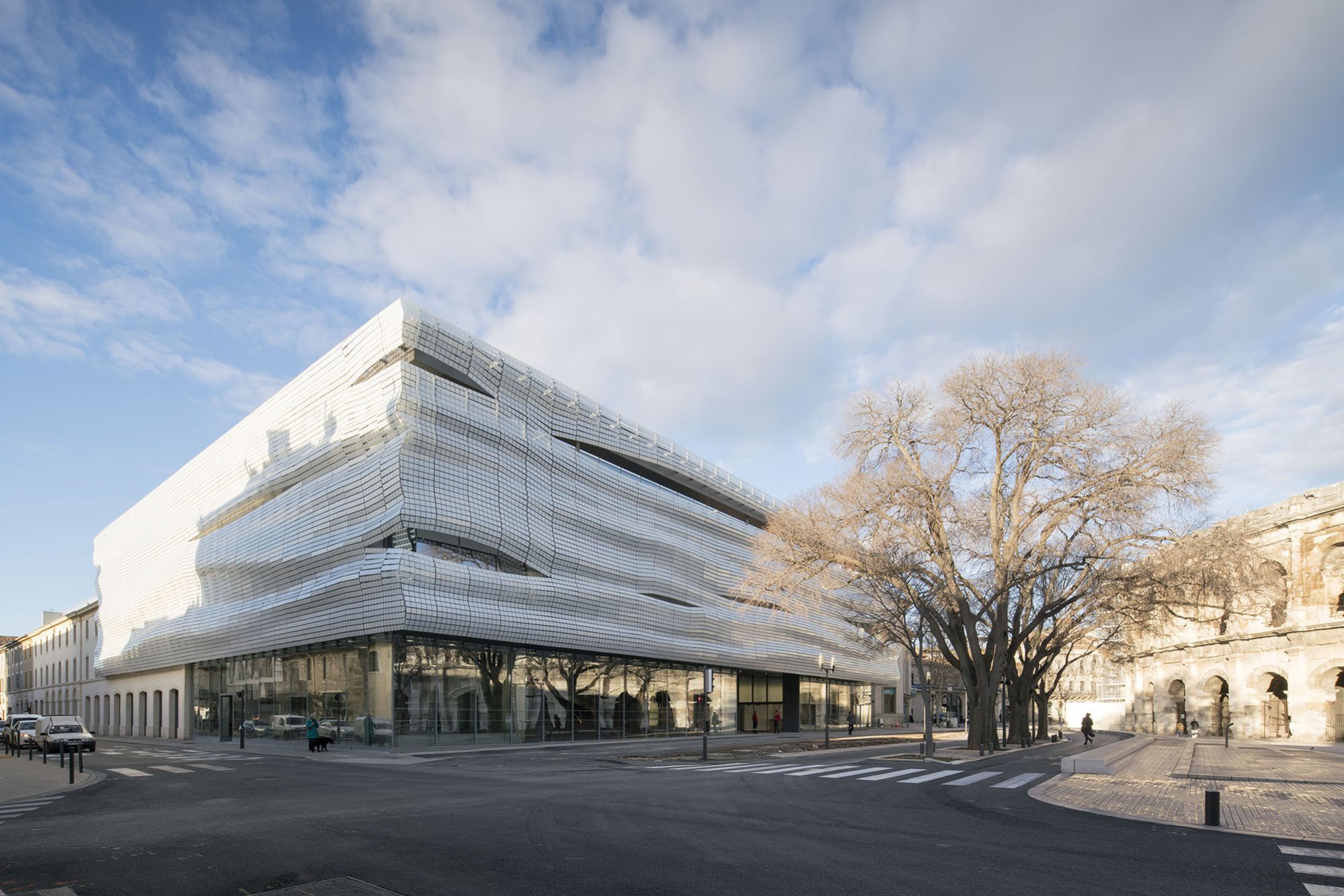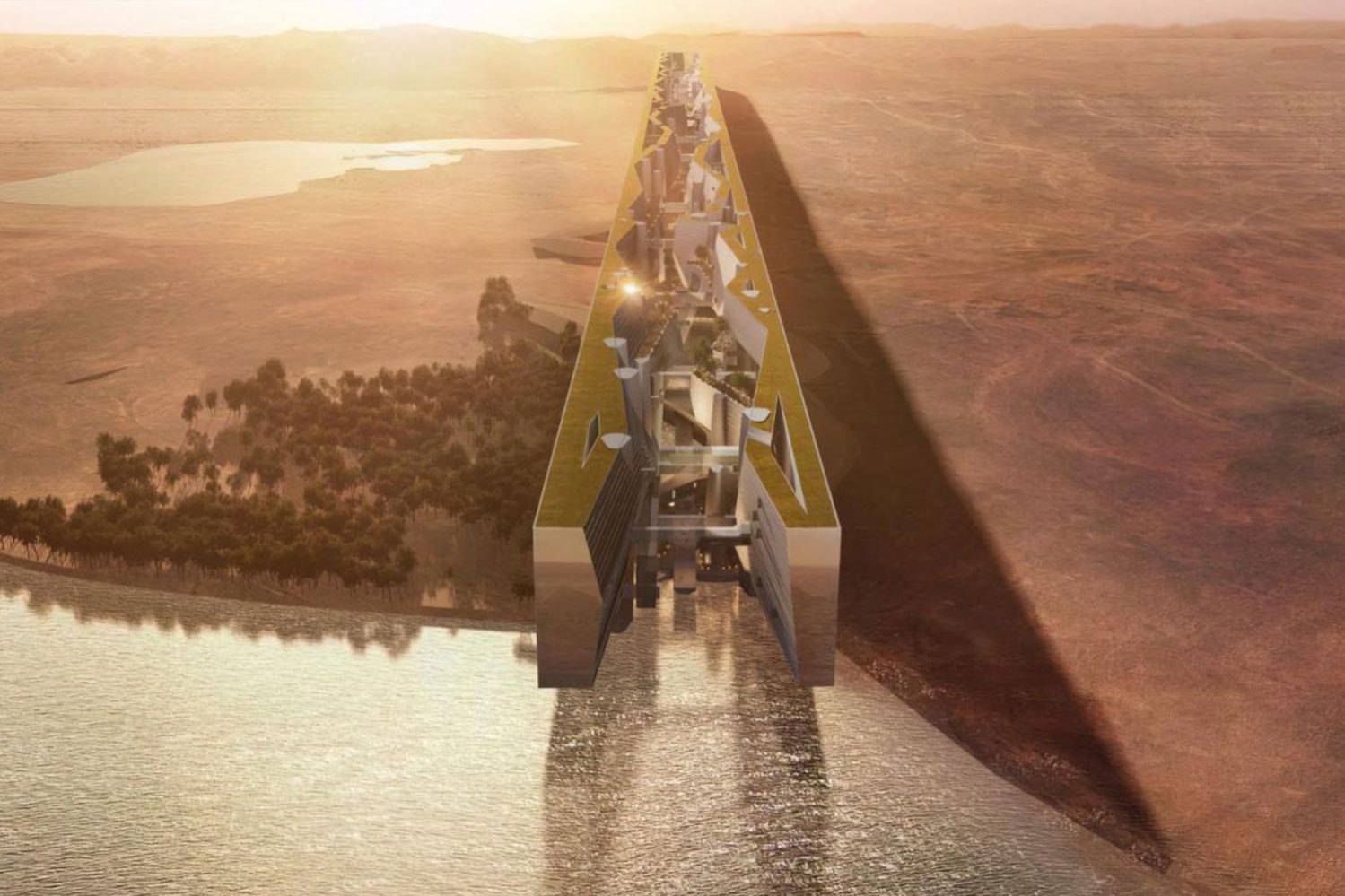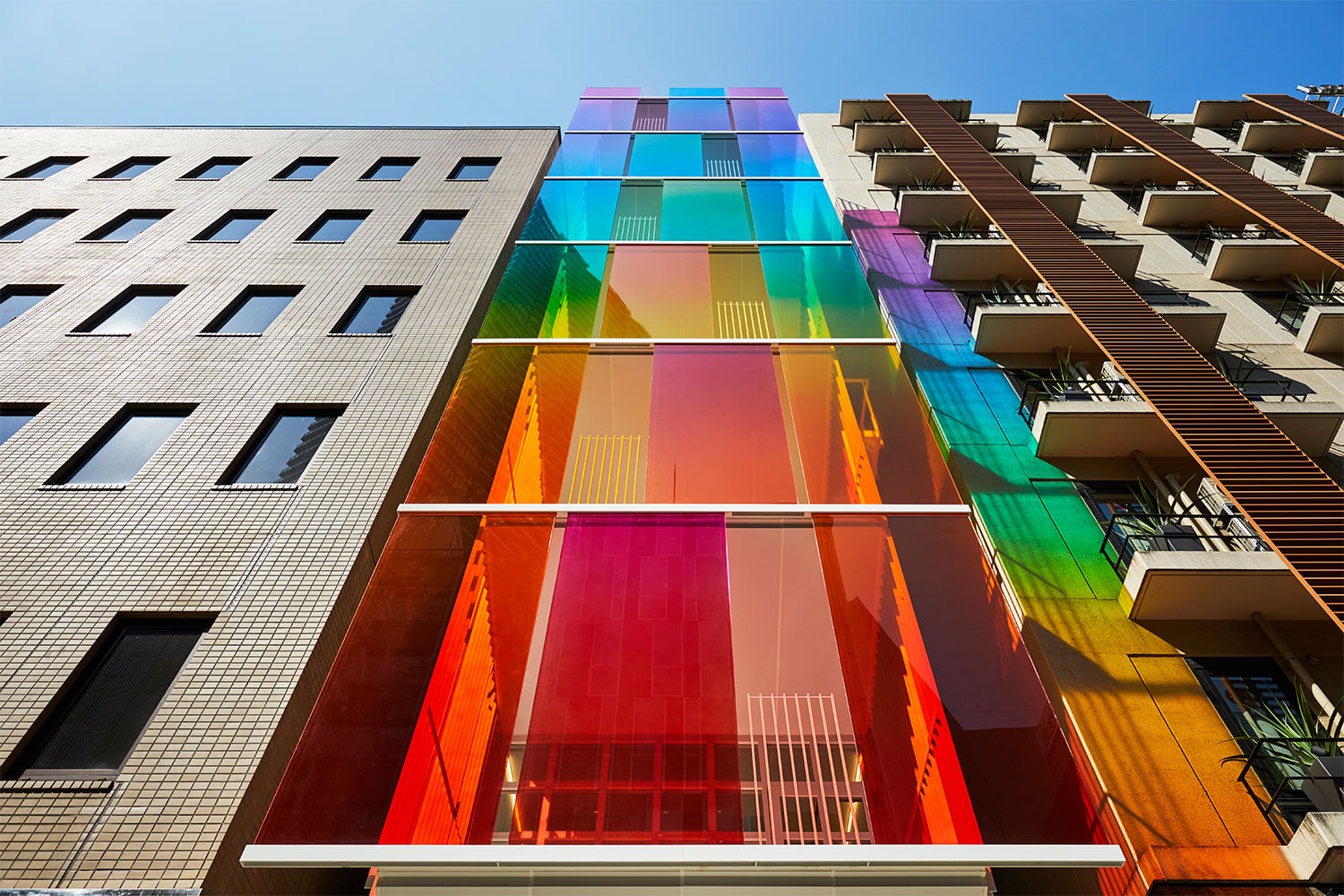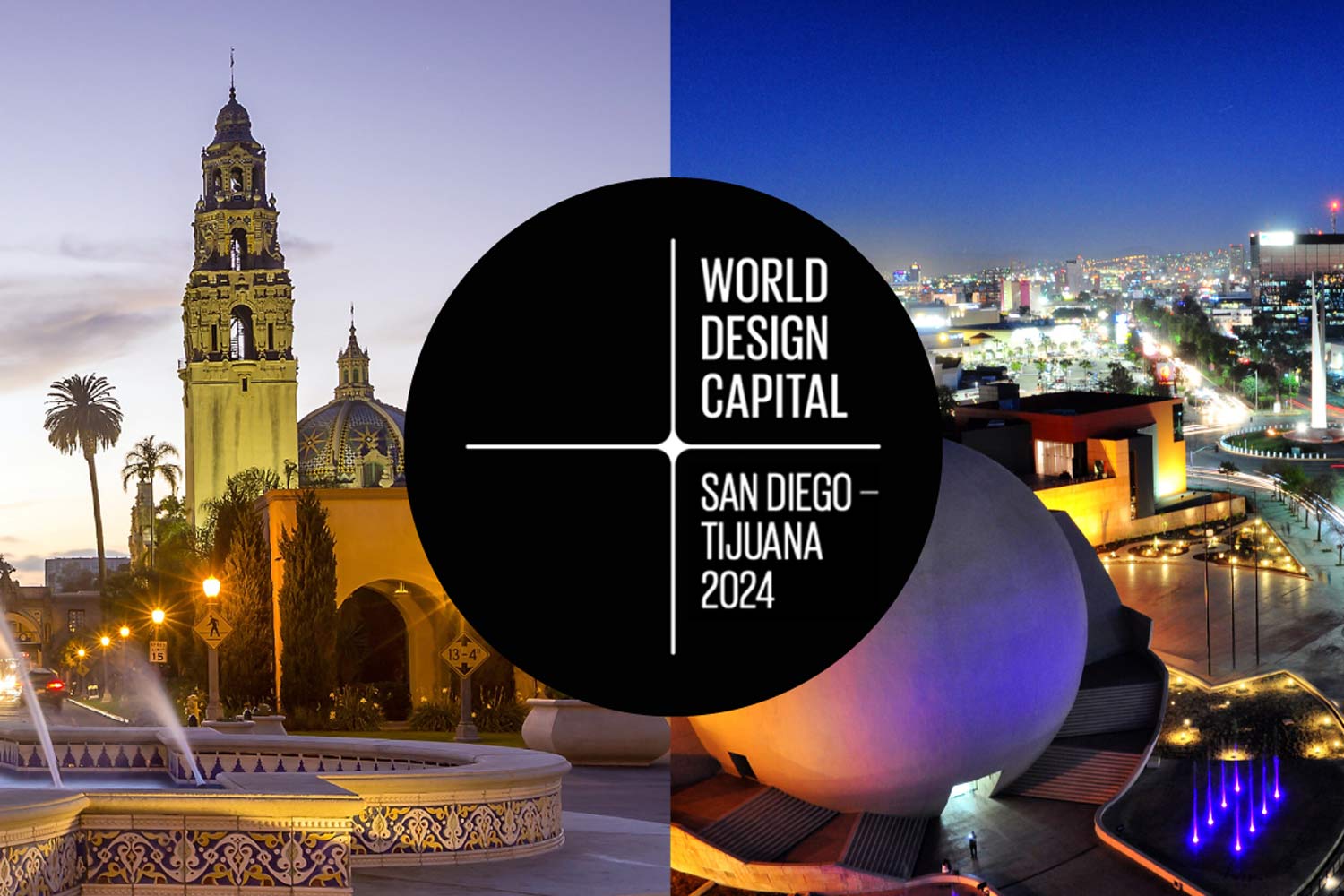The Meta Wellness – Nature Curing Hub is an experience bringing the users as close as possible to nature by symbolizing the five elements of the human body; fire, air, water, earth, and space in the project using different architectural elements. The hub was designed by the group five members; Hagar Ibrahim, Ahmed Al-Naseri, and Mehad Hanbal as part of PAACADEMY’s “Meta-Fluid Studio” with Mariana Cabugueira. The project’s main inspiration is the seashell and how its motion represents the mind’s dynamic energy and connection to nature, which both circle around the concept of wellness.
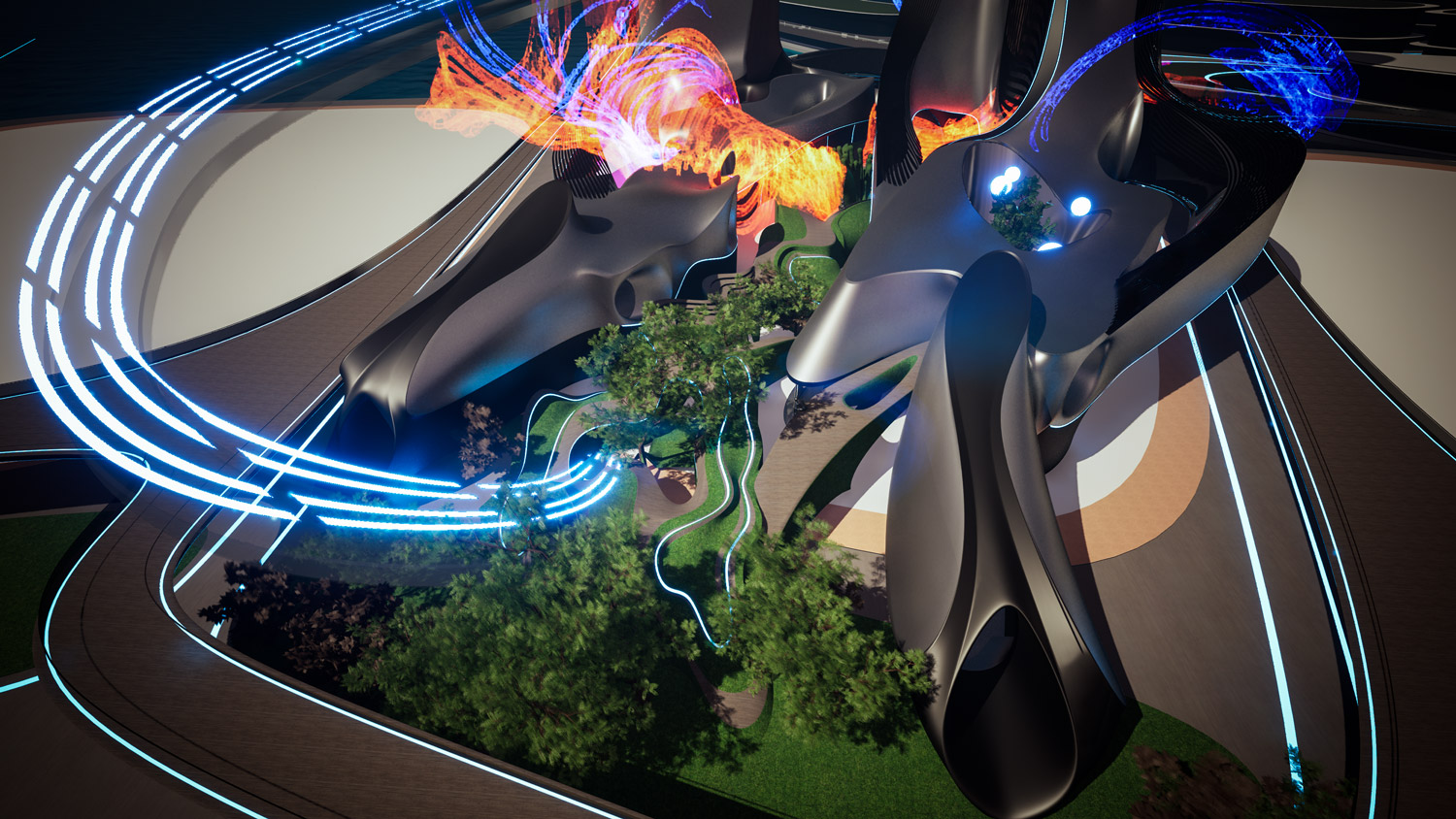
The Meta-Fluid online workshop was hosted by PAACADEMY on ZOOM between May 15-July 15, 2022. Meta-Fluid is one of the High-demand workshops at the PAACADEMY that focuses on exploring the quality and power of Fluid Design to conceive cyber-urban environments in virtual cities. The goal is to create a free-standing virtual city designed by 30 different designers teamed up in 3s. Some teams create meta-archi typologies for this studio, and some designers will join skills to develop a ‘Meta-Urban’ base. Combined, they make a free-standing, fluid virtual urban field and prove the Multi-Author Urban Design to be the directionality for the future of virtual cities.

After some deliberation, the design team decided that incorporating the five elements of the human body; fire, air, water, earth, and space into specific sections would be the greatest approach to integrating the project into nature. And to focus on the human mind, body, and spirit and to foster a sense of tranquility, spas and wellness centers must demonstrate that they are embracing every chance to include healthy and sustainable materials into the structure and design of their spaces. In the form, the curves and movement of the structure are applied to substitute the shell, which stands for eternity, strength, and relaxation, as well as the soul leaving the earth and the course of life. In the form, the five natural elements of the human body and the shape of a shell inspired the project’s design and materials.
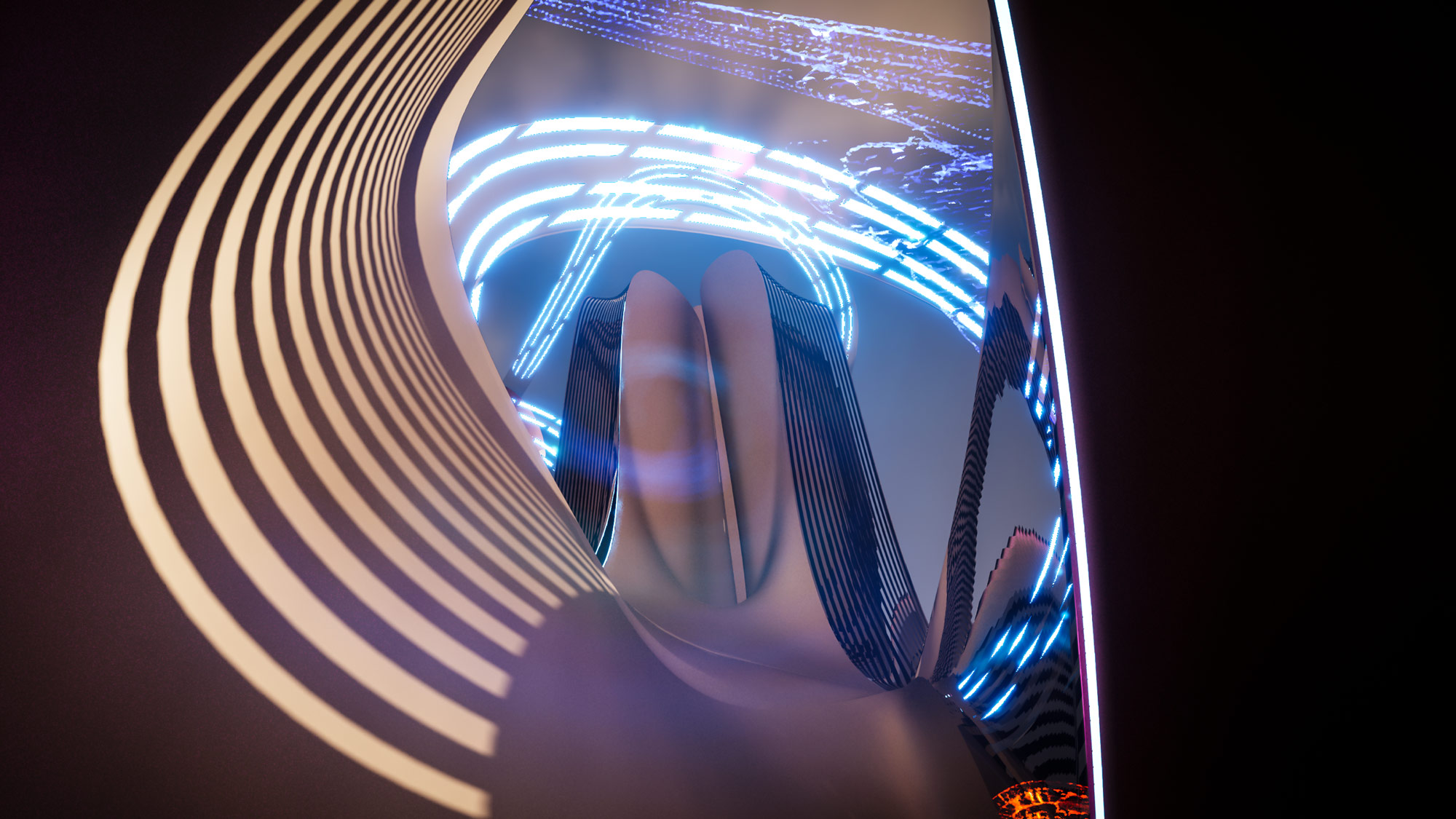
Following is an explanation by the design team on how they integrated the five elements of the human body represented in the project. The first element is represented in the holographic-like particles that produce the fire, symbolizing the energy concentration being drawn out of people’s bodies. The following element is shown in the ramp around the twin towers, representing air, the shifting wind, and the movable spirit lifted from the varied experiences inside the structure. Then there is the water symbolized by the water features, conveying a sense of refinement and eternity.
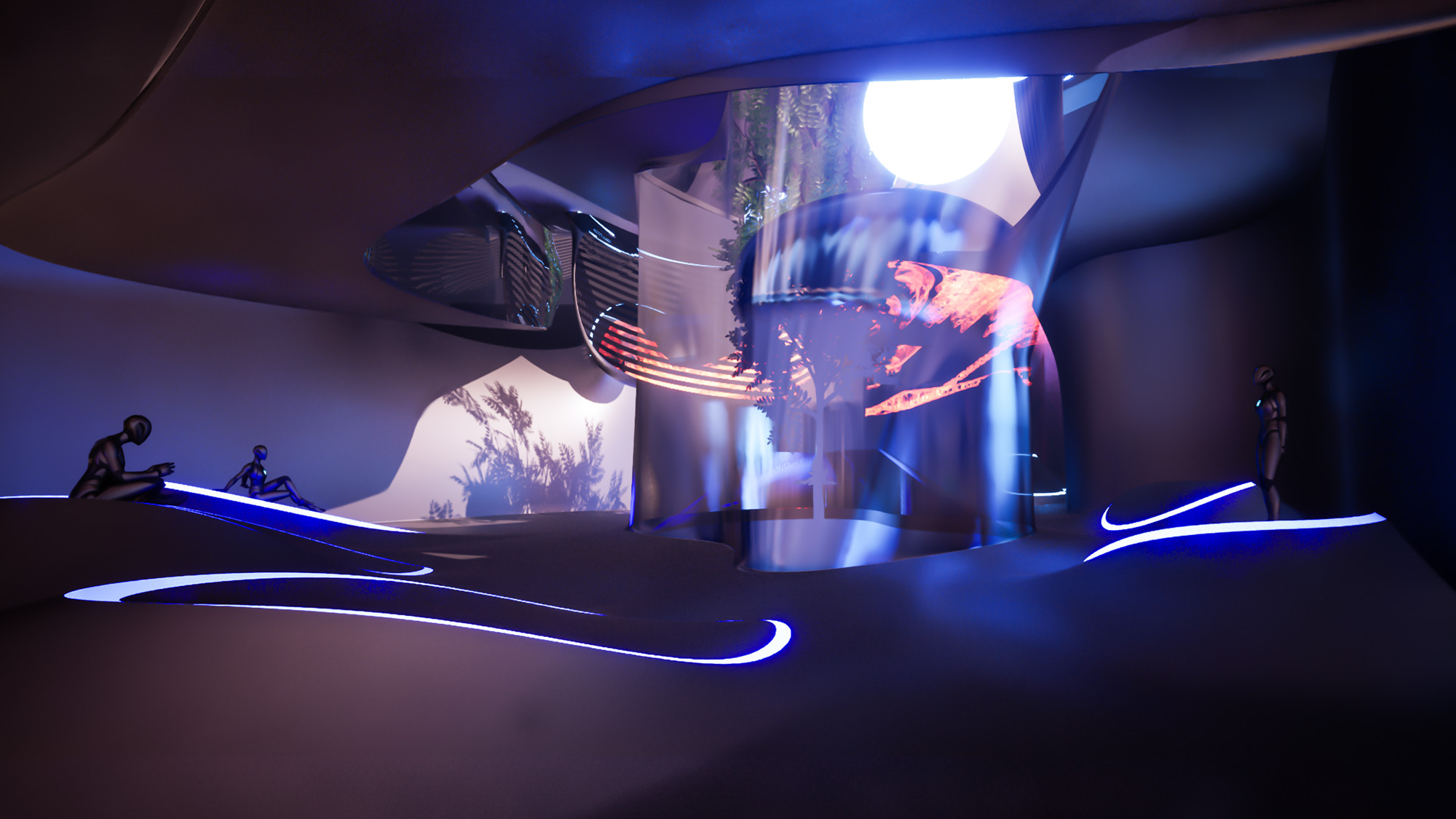
Also, the dynamic aspects of the terrain serve as a representation of the earth which is also the breathing area of the project. The last element is space, depicted by the many chambers inside the structure and the various holographic models that project all the elements and support the various experiences.

The design process was started by establishing the project’s purpose and the desired user experiences. After that, information was gathered by making sketches, taking pictures, and compiling statistics. Ideas and examinations were produced after studying and analyzing examples of typologies related to the concept. Sketches, several mood boards, and research were done to grasp how the data and information gathered may affect the design. After compiling all these initial concepts, Maya was used to create small-scale design solutions. Then, based on all the feedback and remarks, comments gathered from presenting during the Zoom meetings were tackled, and the design was improved based on the feedback.

The designers used Autodesk Maya for this project because it offered an outstanding range of tools and capabilities that made the 3D model come to life. Because it excelled in creating animation and facilitating content production for metaverse projects. Even though the program provided a more difficult experience at first as they were beginners, they found the process of learning it very fun. Undeniably, Maya’s excellent dynamics and effects, rigging, 3D rendering and shading, and motion graphic capabilities are fantastic tools for animation and art.
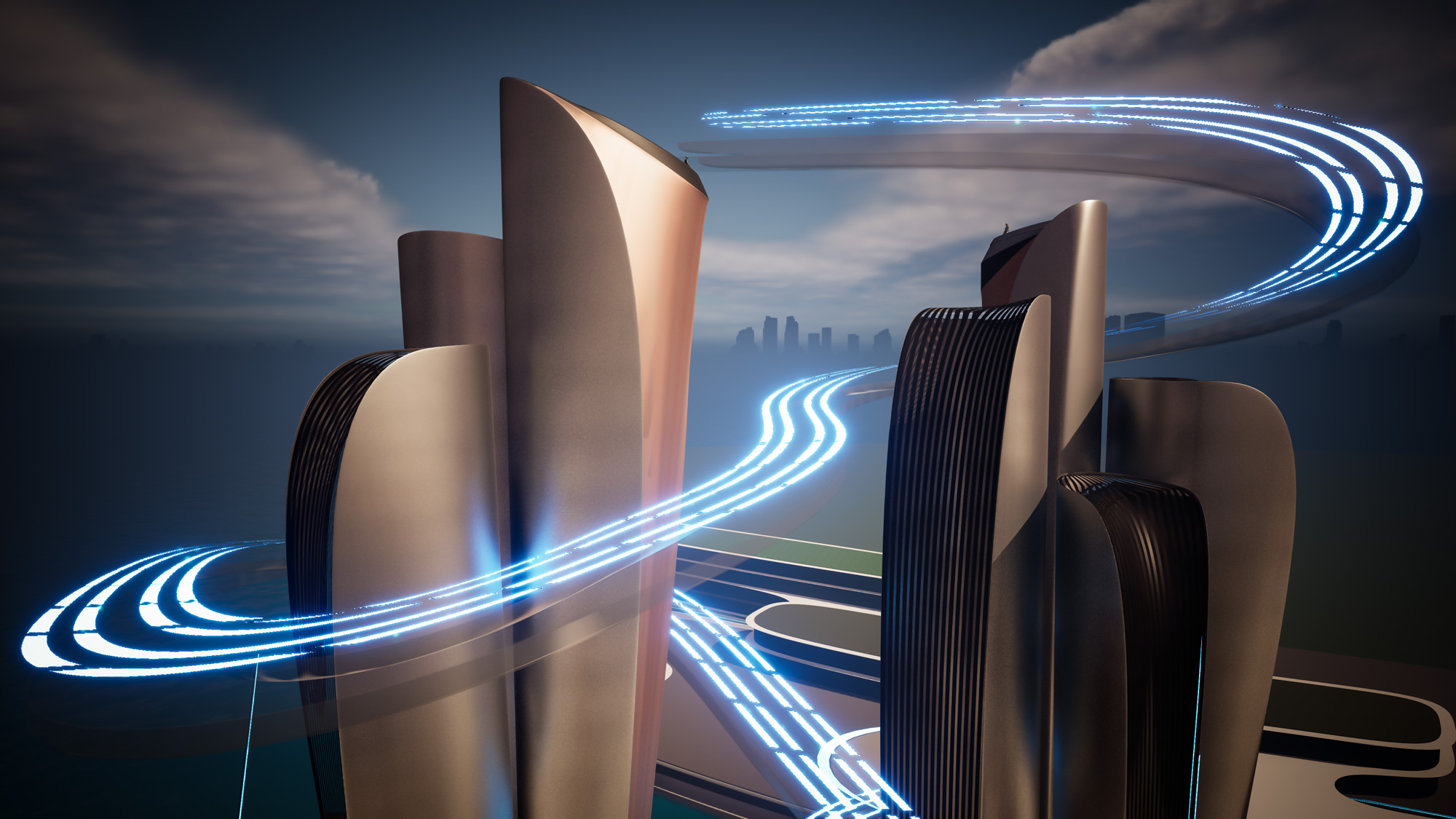
Unreal Engine 5 was the primary application to create animation shots at the visualization stage. After Effects was also used to compile all the shots and give them the effects for both sound and picture. Photoshop was utilized in post-production for the renderings. Unreal Engine was used because of its ability to provide a sufficient user experience and to test it before going to the metaverse; on the other hand, and it’s a successful tool to visualize big projects in real time easily, such as creating the angles of the light and showing different materials for the user in both bird eye view or the human scale view.
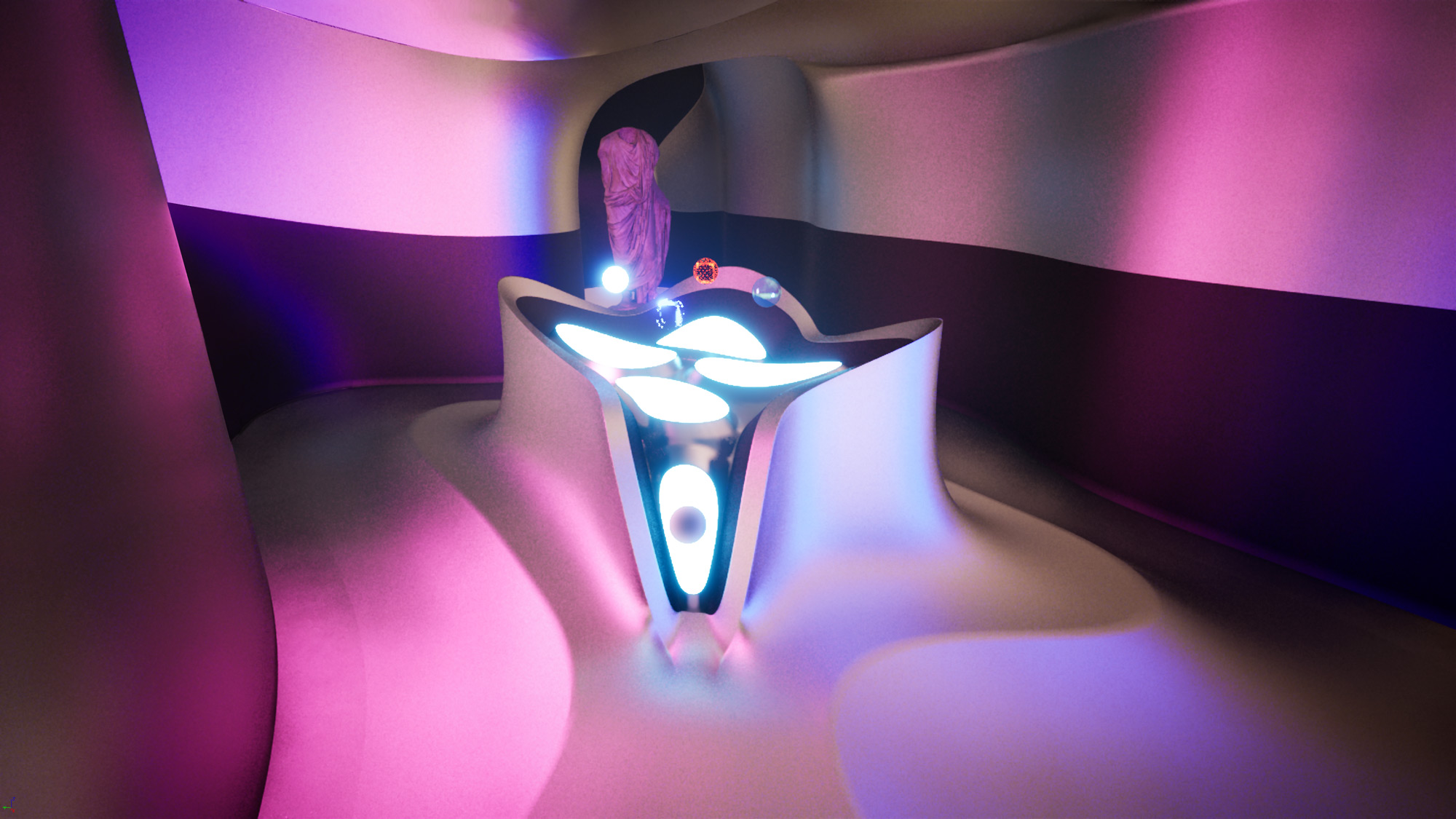
The key feature of the Nature Curing Hub project is how the elements are activated once the user experiences the second stage of the wellness program. Once the user begins meditating and connecting to his body, soul, and mind to release all the energy, the fire, and water features are turned on. Once all the energy has been released, it truly manifests as fire and water, as if the avatars themselves created them. It demonstrates how the vitality of people in this stage gives the area life. The avatars must now re-connect to perform the dual roles of physically viewing and expelling this concentrated energy from their bodies.
Stay tuned with us to see more projects in the upcoming days from the PAACADEMY’s workshop. Click here to register and watch the recordings of the Meta-Fluid Studio.
Credits:
Studio workshop by PAACADEMY
Studio title: Meta-Fluid
Lead by: Mariana Cabugueira
Project name: Meta Wellness – Nature Curing Hub
Students: Hagar Ibrahim – Ahmed Al-Naseri – Mehad Hanbal
Date: From May 15 to July 15, 2022
